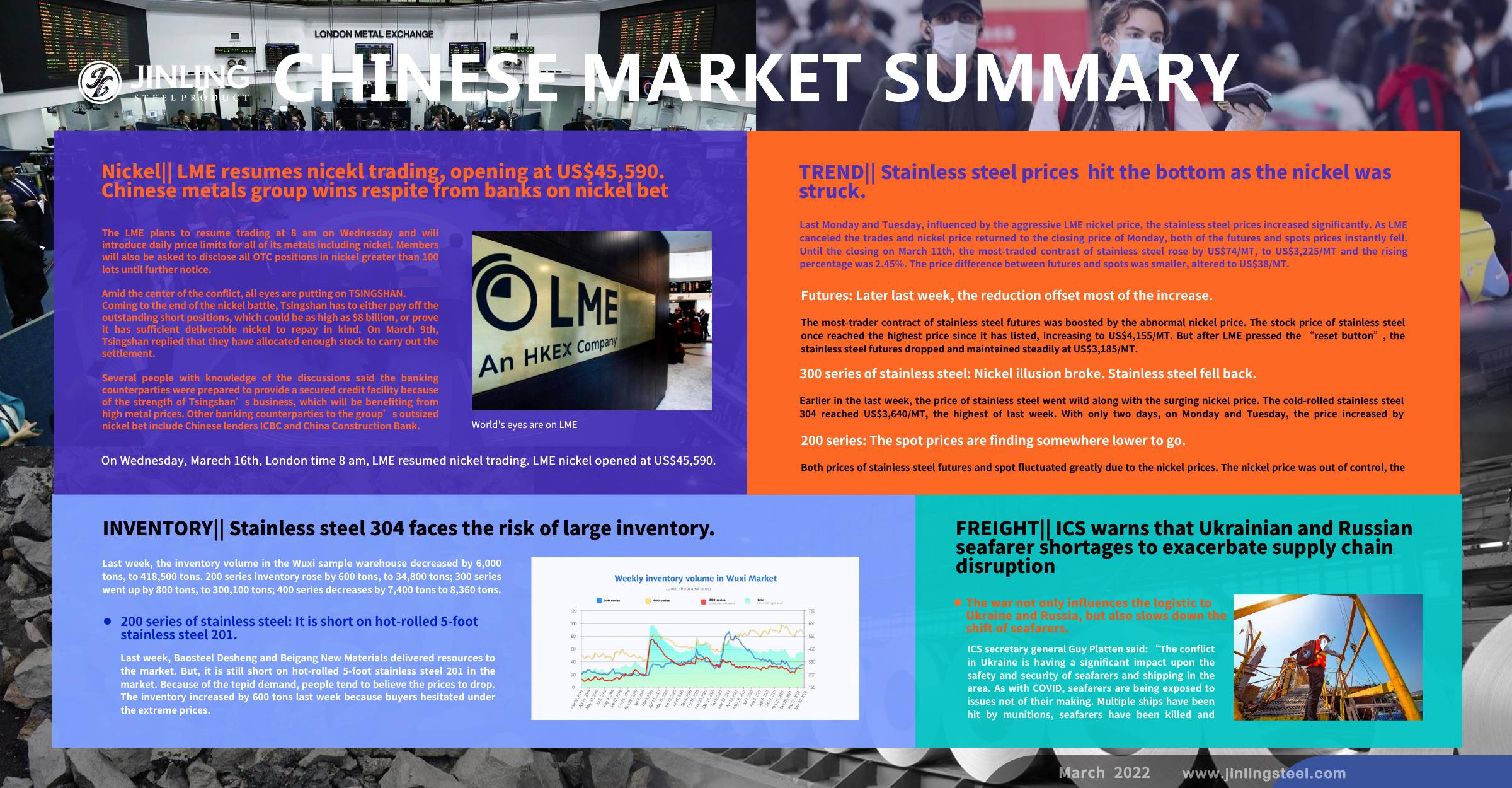It is a big day. LME nickel resumes trading today. It opened at US$45,590 and soon declined to US$44,135, hitting the limit down, the latest terms set by LME. Last week, the stainless steel, as well as the nickel-related markets, were fluctuating. Lacking the pivotal reference, the LME nickel price, the quotations were in a mess. Generally, the stainless steel prices increased earlier last week, but with the shutdown of LME nickel, the stainless steel prices tended to reduce. Based on the chaos, buyers hesitated in the purchase, demand was tepid. About the Stainless Steel Market Summary in China last week and more forecast, please keep reading.
|
Grade |
Origin |
Market |
Average Price (US$/MT) |
Price Difference (US$/MT) |
Percentage (%) |
|
304/2B |
ZPSS |
Wuxi |
3,600 |
353 |
11.38% |
|
Foshan |
3,645 |
353 |
11.21% |
||
|
Hongwang |
Wuxi |
3,385 |
302 |
10.27% |
|
|
Foshan |
3,350 |
258 |
8.73% |
||
|
304/NO.1 |
ESS |
Wuxi |
3,395 |
321 |
10.97% |
|
Foshan |
3,375 |
296 |
10.06% |
||
|
316L/2B |
TISCO |
Wuxi |
5,320 |
512 |
11.01% |
|
Foshan |
5,300 |
471 |
10.07% |
||
|
316L/NO.1 |
ESS |
Wuxi |
5,010 |
378 |
8.46% |
|
Foshan |
5,035 |
369 |
8.18% |
||
|
201J1/2B |
Hongwang |
Wuxi |
1,995 |
87 |
4.92% |
|
Foshan |
1,975 |
31 |
5.16% |
||
|
J5/2B |
Hongwang |
Wuxi |
1,895 |
122 |
7.45% |
|
Foshan |
1,885 |
87 |
5.24% |
||
|
430/2B |
TISCO |
Wuxi |
1,680 |
17 |
1.14% |
|
Foshan |
1,660 |
33 |
2.23% |
Nickel|| LME nickel opened at US$445,590, hit the limit down. Chinese metals group wins respite from banks on nickel bet
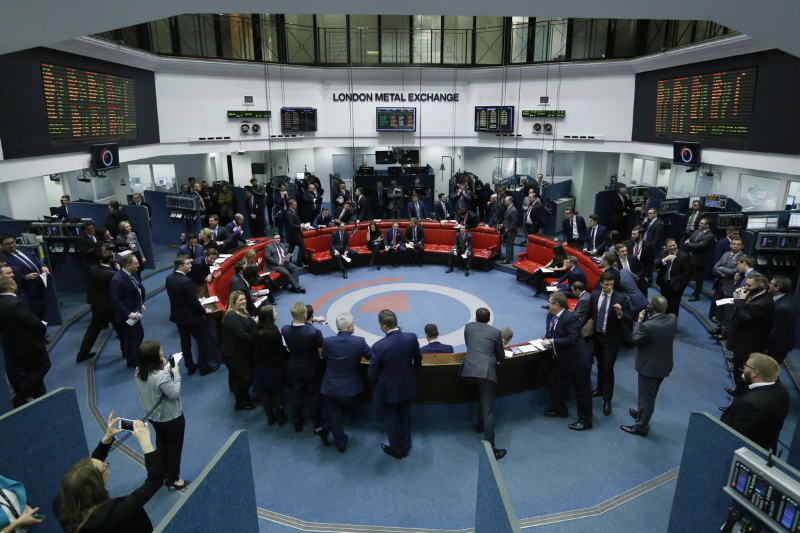
The LME resumed trading at 8 am on Wednesday and introduced daily price limits for all of its metals including nickel. Members are also be asked to disclose all OTC positions in nickel greater than 100 lots until further notice.
Amid the center of the conflict, all eyes are putting on TSINGSHAN.
Coming to the end of the nickel battle, Tsingshan has to either pay off the outstanding short positions, which could be as high as $8 billion, or prove it has sufficient deliverable nickel to repay in kind. On March 9th, Tsingshan replied that they have allocated enough stock to carry out the settlement.
Several people with knowledge of the discussions said the banking counterparties were prepared to provide a secured credit facility because of the strength of Tsingshan’s business, which will be benefiting from high metal prices. Other banking counterparties to the group’s outsized nickel bet include Chinese lenders ICBC and China Construction Bank.
Nickel Drops By Exchange Limit as Trading Resumes on the LME
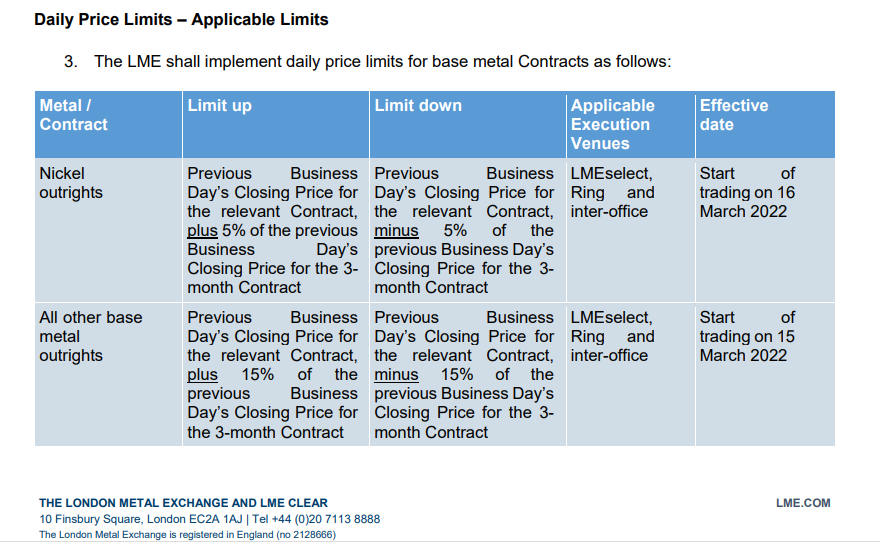
Nickel fell by the new 5% limit as trading reopened on the London Metal Exchange, in a sign that a short squeeze that has caused chaos across the metals industry may be easing. The drop narrows the gap between nickel contracts on the Shanghai Futures Exchange, which have continued trading during the suspension. Last Tuesday’s historic decision to halt trading came after spiraling prices left some brokers scrambling to pay huge margin calls against bearish positions held by top producer Tsingshan Group Holding Co.
The slump is a sign that last week’s historic short squeeze is easing, after Tsingshan secured a standstill agreement with its banks. Commodities markets have been hit by a wave of selling since the LME halted trading to defuse the unprecedented rally that it said posed a systemic threat to its market, although other metals regained some ground on Wednesday.
Shanghai Futures Exchange contracts closed up 8.6% at 235,200 yuan ($37,048) a ton, but remained below LME prices before the London market opened.
TREND|| Stainless steel prices are to hit the bottom as the nickel was struck.
Last Monday and Tuesday, influenced by the aggressive LME nickel price, the stainless steel prices increased significantly. As LME canceled the trades and nickel price returned to the closing price of Monday, both of the futures and spots prices instantly fell. Until the closing on March 11th, the most-traded contrast of stainless steel rose by US$74/MT, to US$3,225/MT and the rising percentage was 2.45%. The price difference between futures and spots was smaller, altered to US$38/MT.
Futures: Later last week, the reduction offset most of the increase.
The most-trader contract of stainless steel futures was boosted by the abnormal nickel price. The stock price of stainless steel once reached the highest price since it has listed, increasing to US$4,155/MT. But after LME pressed the “reset button”, the stainless steel futures dropped and maintained steadily at US$3,185/MT.
Currently, the stainless steel stock price returns to the price of two weeks ago. The reduction of stainless steel stock prices offset the irrational increase during the week. The most-traded contract price is close to the spot price. It seems that the market is steeping to normal and the stainless steel will again face negativity, particularly from the supply side. On one hand, China’s stainless steel inventory is still large. Not to mention the coming settlement of the futures delivered in March, the inventory of Shanghai Futures Exchange will enter the spot market, which will cause great pressure on the inventory and prices. On the other hand, people doubt whether the current stainless steel price can maintain. Despite the irrational price above US$3,350/MT, to buyers, prices above US$3,185/MT are not attractive at all. It is well accepted that the price can hardly increase, but the high cost of stainless steel gives enough support to maintain the stainless steel price. Under the shadow of the fluctuated nickel price, the prices of nickel ore and ferronickel stay high and it won’t drop in the short term. As for the chromium ore, the supply has been tight in China and ferrochrome increased greatly, which further pushes up the stainless steel prices.
To sum up, the stainless steel market is on the way to normal. Inventory remains high and demand is tepid, but the high cost will at least support the price not to fall easily. It is predicted that the stainless steel futures price will remain fluctuated and have a slightly weakening tendency.
300 series of stainless steel: Nickel illusion broke. Stainless steel fell back.
Earlier in the last week, the price of stainless steel went wild along with the surging nickel price. The cold-rolled stainless steel 304 reached US$3,640/MT, the highest of last week. With only two days, on Monday and Tuesday, the price increased by US$497/MT. A harsh increase came with a great recession. Until March 11th, the cold-rolled 4-foot mill-edge stainless steel 304 of the private-owned mills in Wuxi rose by only US$48/MT to US$3,185/MT, 1.58% higher compared to March 4th. As for the hot rolling, the price was quoted at SU$3,205/MT, US$64/MT higher than the price on March 4th. The prices of cold and hot rolled stainless steel are close.
Since the surge of nickel and stainless steel prices earlier last week, most buyers chose to wait on the fence. It seems that the exaggerating prices left nothing to the market. Not until March 11th, did the trading vibe starts to warm up.
Influenced by the nickel price, the EXW price of high nickel iron rose by US$30/nickel to US$280/nickel. The price of ferrochrome increased by US$64/MT to US$1,442/MT. Therefore, the production cost of cold-rolled stainless steel 304 went up by US$267/MT.
200 series: The spot prices are finding somewhere lower to go.
Both prices of stainless steel futures and spot fluctuated greatly due to the nickel prices. The nickel price was out of control, the stainless steel spot price climbed with the trend. Unlike stainless steel 304 which responded to the market dynamics quickly, stainless steel 201 price grew slower, by US$80/MT~US$144/MT in one day. As LME halted nickel trading and canceled trades on Tuesday, the spot prices dived immediately. The stainless steel 201 spot price instantly dropped by US$48/MT ~ US$80/MT. Since the Russia-Ukraine war, stainless steel prices have increased. During this period, most buyers have waited and few would reach their hands out. Consumption has been weak and the spot prices are still going down.
400 series of stainless steel: Cost remains high and the prices will rise.
The price of stainless steel 430/2B from TISCO and JISCO was between US$1,710/MT and US$1,715/MT, which were higher than the price on March 4th. The considerable transaction volume gives faith to the factories to maintain the price.
The cost of high chromium is high. Besides, the pandemics are still lingering in Inner Mongolia and Shanxi provinces which are the major production areas of high chromium.
Summary:
300 series of stainless steel: Fever is dispensing. The price of the stainless steel 300 series is working towards a stable market. Due to the high raw material cost, the stainless steel prices won’t fall too much. It is predicted that the price of the cold-rolled stainless steel 304 of the private-owned mills will fluctuate around US$3,185/MT.
200 series of stainless steel: Without the support of nickel price, the price of stainless steel 201 kept reducing, offsetting the increase during the several days. It is predicted that the price might hit the bottom and then rebound slightly.
400 series of stainless steel: The price of chromium and coke continue to increase. The high chromium purchasing price of steel mills increased by US$80/MT (50% chromium content). The production cost keeps rising. It is predicted that the price of 430/2B will rise to US$1,725/MT.
INVENTORY|| Stainless steel 304 faces the risk of large inventory.
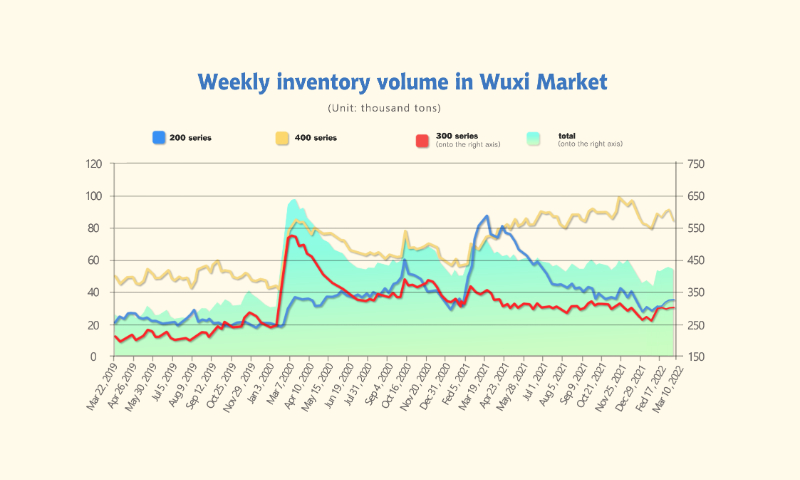
Last week, the inventory volume in the Wuxi sample warehouse decreased by 6,000 tons, to 418,500 tons. 200 series inventory rose by 600 tons, to 34,800 tons; 300 series went up by 800 tons, to 300,100 tons; 400 series decreases by 7,400 tons to 8,360 tons.
200 series of stainless steel: It is short on hot-rolled 5-foot stainless steel 201.
Last week, Baosteel Desheng and Beigang New Materials delivered resources to the market. But, it is still short on hot-rolled 5-foot stainless steel 201 in the market. Because of the tepid demand, people tend to believe the prices to drop. The inventory increased by 600 tons last week because buyers hesitated under the extreme prices.
300 series of stainless steel: Stainless steel 304 faces the risk of large inventory.
Last week, the stainless steel 300 series inventory slightly increased by 800 tons to 300,100 tons. This increase is rather small because the hot-rolled production line of TISCO was overhauled in the second half of February. The output of crude steel and stainless steel products reduced in February compared to January. Last week, the steel mill finished maintenance and recovered to produce. TSINGSHAN continued to register warehouse receipts. According to a source who knows the market, under the high prices, there were few orders going to steel mills. So far, most steel giants continue to produce as normal. About the future inventory volume, it depends much on the demand. If the demand maintains tepid, it will have a risk of overstock.
400 series of stainless steel: The decrease of inventory reduces the pressure of large inventory.
In February, the inventory of stainless steel 400 series increased by 14,600 tons, to 465,600 tons. Last week, the inventory was reduced by 7,400 tons to 83,600 tons in Wuxi’s sample warehouse. The major reason for the decrease was the maintenance of TISCO in the second half of February. As it recovered from the overhaul, the delivery volume will rise. Different from other grades of stainless steel, the stainless steel 400 series was not affected by nickel. The prices did not change much. The decrease of inventory last week reduces the pressure of large inventory that has lasted for a long time.
RAW MATERIALS|| High-grade ferronickel hits new high, increasing by US$32.
Last week, the average EXW price of high-grade ferronickel was US$269/ni, which was US$22/ni higher than the last weekly average price, increasing by 9.02%. As for the low-grade ferronickel ( 1.6%<Ni≤1.8%), on March 11th, the weekly average price was US$827/MT, rising by US$26/MT compared to the weekly average price of two weeks ago.
Last week, the nickel of LME only traded for two days and even the trades on March 8th were canceled because the nickel price surged above US$100,000. LME was forced to halt the trades. In China, the nickel of Shanghai Futures Exchange also stayed at the same pace as LME. From March 7th to March 9th, nickel of SFE increased to limit up. Following LME, Shanghai Futures Exchange halted some trades of nickel contracts on March 10th. Last Friday, Shanghai Futures Exchange reopened the nickel trade, and it soon plunged to limit down.
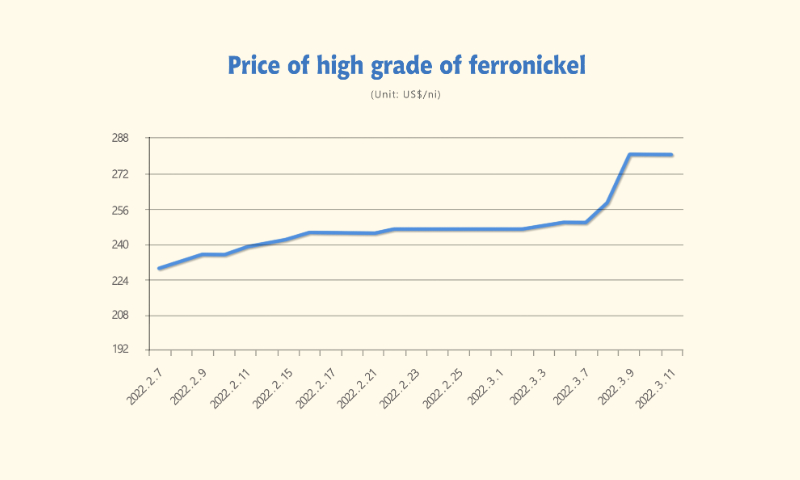
About ferronickel, the price of last week increased greatly. Due to the fluctuating nickel price, the quotations of ferronickel were chaotic. Earlier, the EXW price of ferronickel rose to US$280/Ni, US$30/Ni higher than the last weekend. With the halt of LME nickel and SFE nickel, some ferronickel factories did not update their quotations because they want to wait until LME restarts the nickel trade to see how the price will go. Lacking the guidance price and rational market sentiment, Wednesday, when LME nickel returns, will be vital to the industry.
Nickel ore also increased last week because of the rising sea freight. The high transportation cost raises the price delivered to the destination port. Resources circulated in the market are limited. Demand is waiting for the peak season, and now it is on the fence. So far, high-grade ferronickel is tight in China. One reason is that China’s import volume of ferronickel is low because The Philippines is still in the rainy season. Another reason comes from the maintenance of the ferronickel factories, reducing the domestic output. The rainy season as well as the maintenance will come to an end in late March. It is predicted that the price of nickel ore will remain high in recent two weeks.
Influenced by the fluctuations of nickel price, nickel trading was gloomy. Nickel inventory of Shanghai Futures Exchange kept increasing. LME nickel inventory also started to rise. It is like post-disaster reconstruction. The market needs time to find equilibrium in price to balance the demand and supply. It is predicted that the inventory of nickel will raise.
US dollar index is near 100. The chaos in the world stimulates the US dollar to return. FED announced that it is of large possibility that they will add interest, which will give a strong strike on the long in the market.
To sum up, nickel ore and ferronickel will maintain strong; refined nickel needs time to recover from the battle; it is predicted that ShFE nickel will tend to go down.
FREIGHT|| ICS warns that Ukrainian and Russian seafarer shortages to exacerbate supply chain disruption
The International Chamber of Shipping (ICS) recently warned that the labor shortage in the global shipping market caused by the Russian-Ukrainian conflict will exacerbate the current global supply chain risks.
According to the Seafarer Workforce Report published by the Baltic International Chamber of Shipping (BIMCO) and ICS, as of 2021, there are 1.89 million seafarers worldwide serving on more than 74,000 ships. The total number of seafarers in Russia and Ukraine accounts for 14.5% of the total number of seafarers in the world.
To maintain the global trades steady and sustainable, seafarers have to shift freely around the world. However, the cancellation and block of lines make them difficult to shift.
Meanwhile, concerning the safety of seafarers, and the increasing insurance fee of the lines to Ukraine and Russia, liners are facing high risk and cost to send the cargoes out.
The war not only influences the logistic to Ukraine and Russia, but also slows down the shift of seafarers.
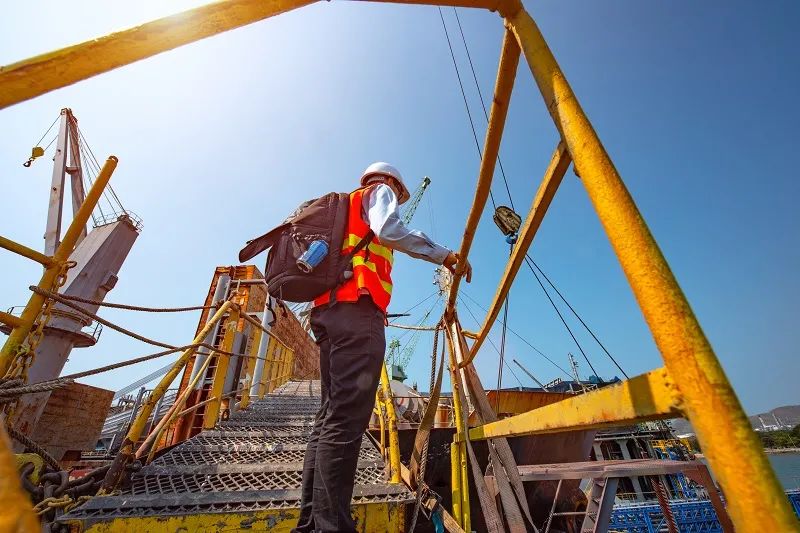
It is understood that some seafarers chose to leave their ships in Ukraine for safety reasons.
Relevant data show that Russian and Ukraine seafarers account for 14.5% of the total number of seafarers in the world. Russian seafarers accounted for 10.5% of the total number of seafarers, reaching 198,123, of which 71,652 were senior seafarers; Ukrainian seafarers accounted for 4% of the total seafarers, reaching 76,442, of which 47,058 were senior seafarers.
ICS secretary general Guy Platten said: “The conflict in Ukraine is having a significant impact upon the safety and security of seafarers and shipping in the area. As with COVID, seafarers are being exposed to issues not of their making. Multiple ships have been hit by munitions, seafarers have been killed and injured and seafarers of all nationalities are trapped on ships berthed in ports. It is of the utmost urgency that their evacuation from these areas of threat should be ensured by those States with the power to do so. The impact upon innocent seafarers and their families cannot be underestimated.
ICS further warned of specific impacts on the global trades in wheat and crude petroleum products.
